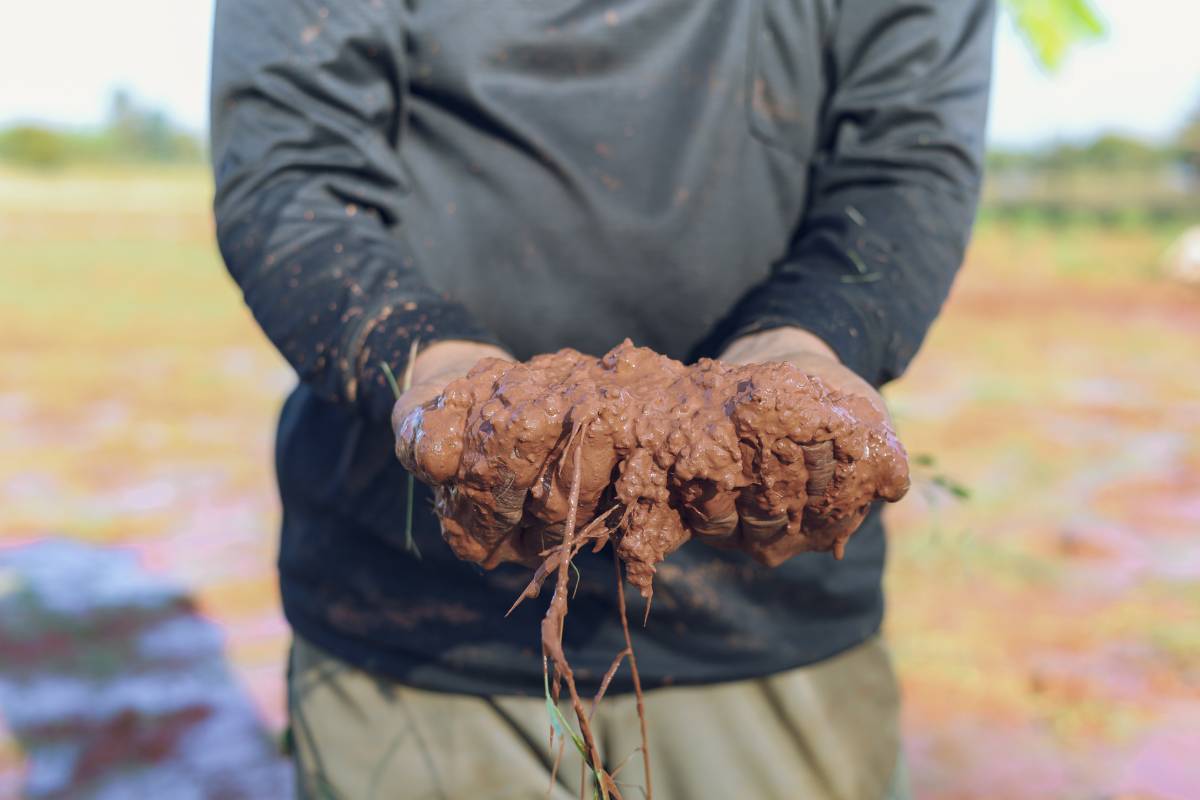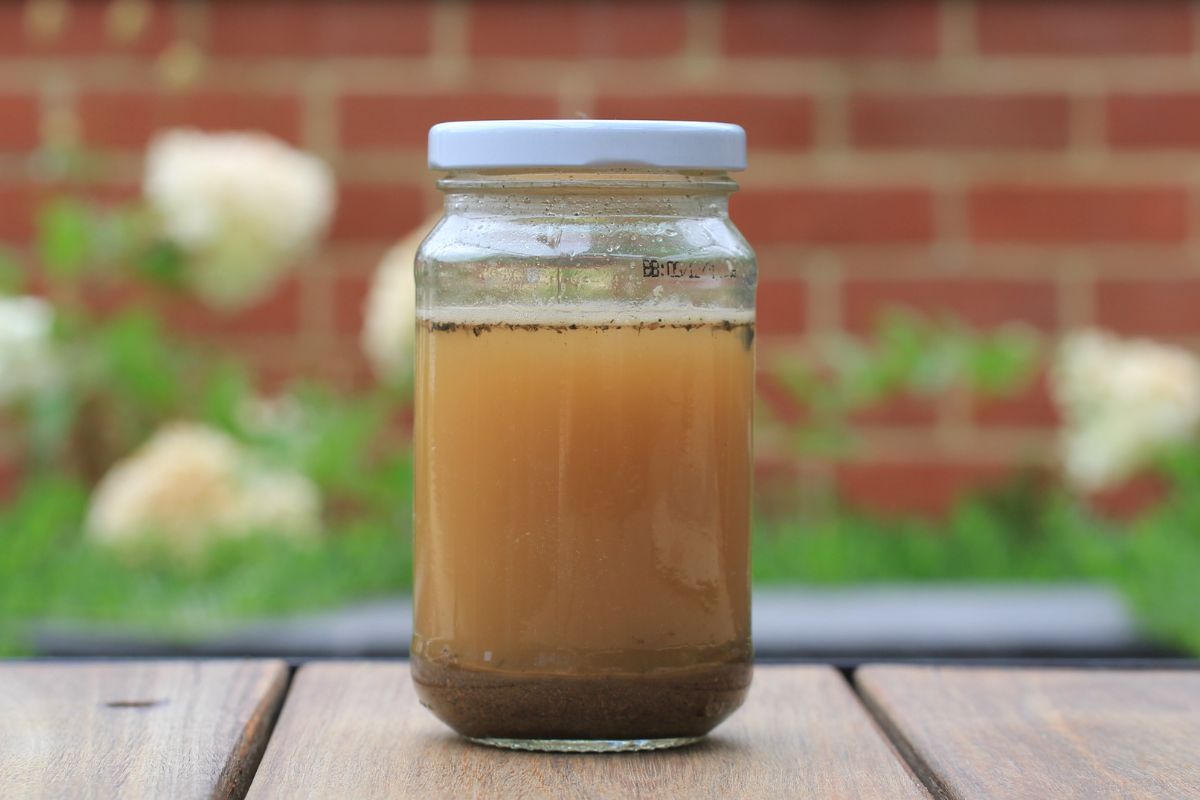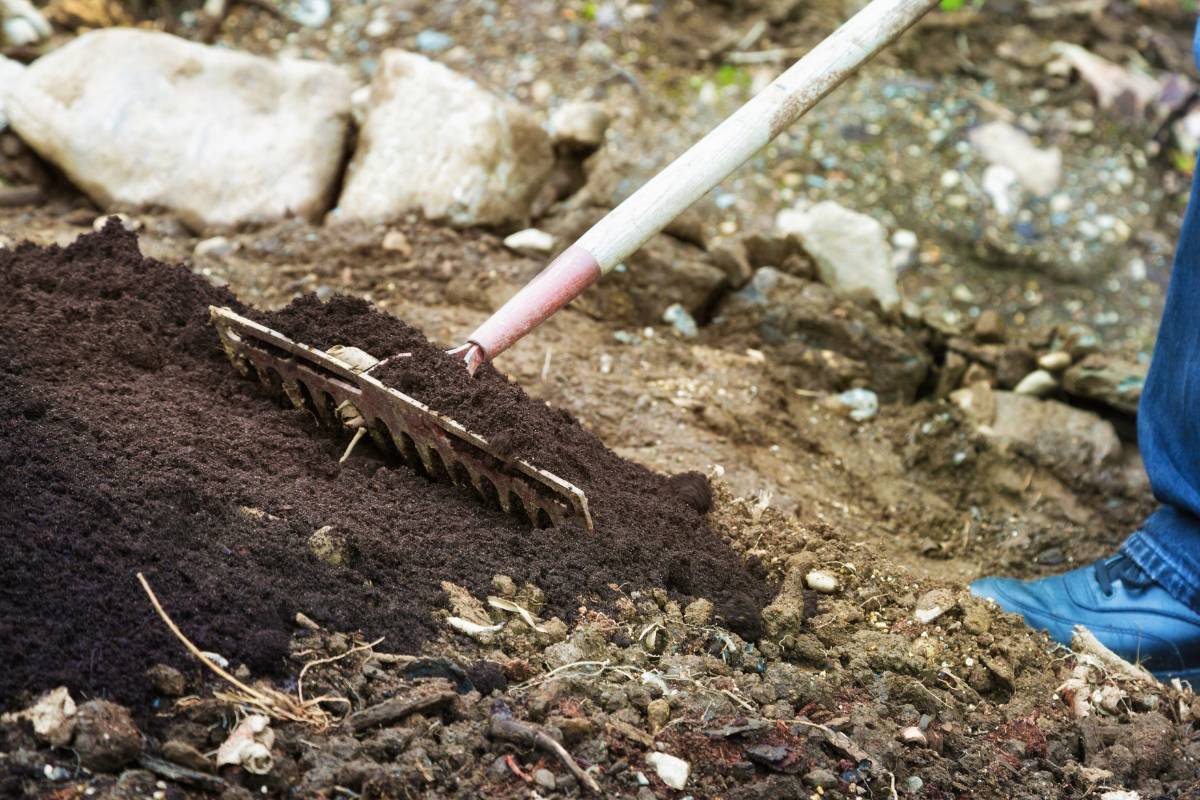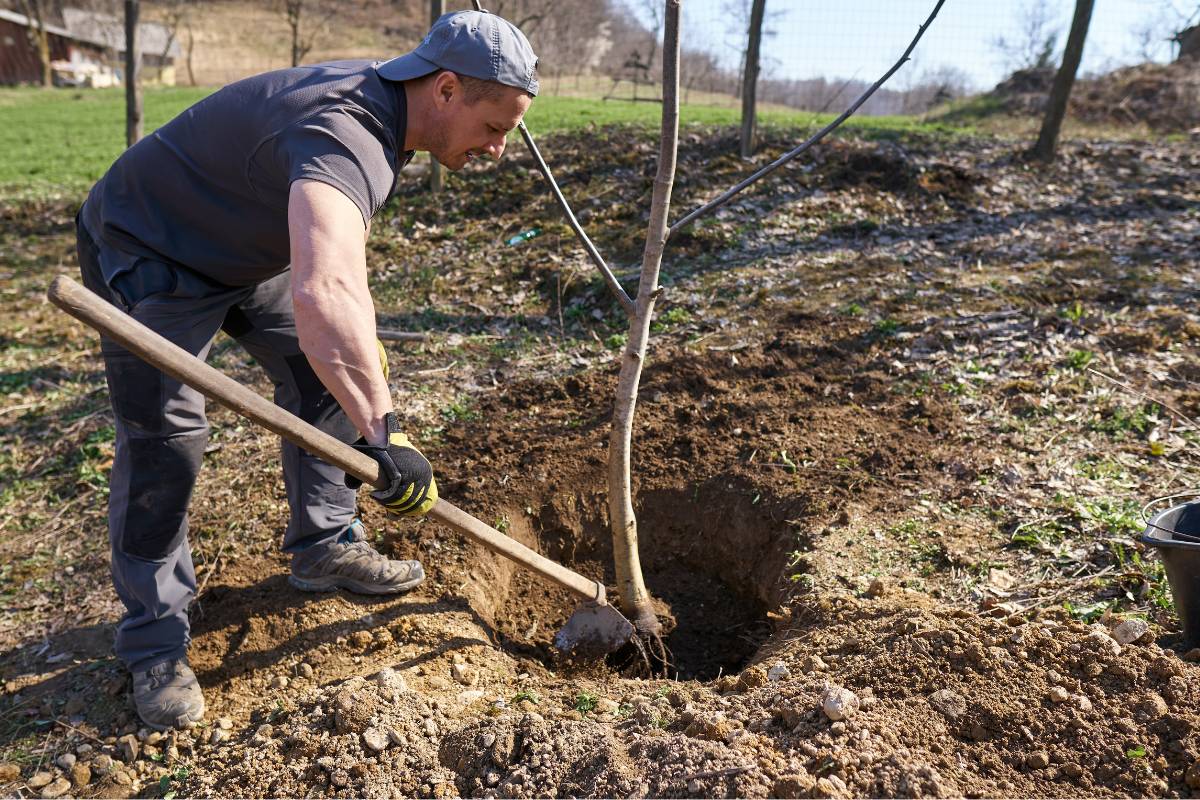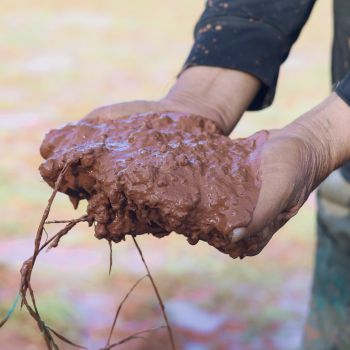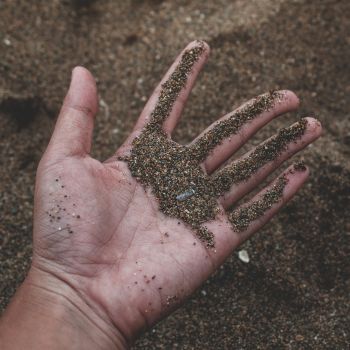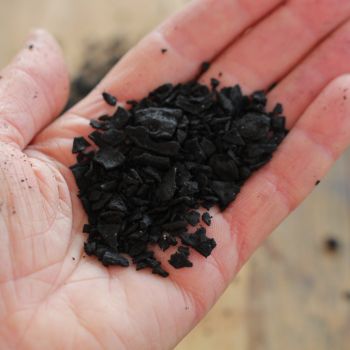Clay soil is notorious for being heavy, easily compacted and difficult to dig. Gardeners aware of clay’s reputation would be forgiven for thinking the only option is to import new topsoil from the get-go. But with the right soil management and plant selection, you can harness the unique properties of clay soil to your advantage.
Understanding Clay Soil
Clay soil is characterised by its fine particles and very small air pockets, which give the soil a heavy, dense texture. Often orange or yellow in colour, clay soil is rich in weathered minerals and other nutrients. To touch, clay soil is cool and smooth-textured and can be formed into a ball or ribbon. If you’re not sure if you have clay soil, there’s a simple test that will reveal your soil type.
There are two main types of clay soil, called ‘reactive’ and ‘non-reactive’. Reactive clay soils absorb water readily, swelling and increasing in size when wet and then becoming very dry, often shrinking and cracking in the process. This property is why reactive clay is known as ‘shrink-swell’ clay. Non-reactive clay doesn’t hold as much moisture and doesn’t change size when wet - hence, it’s considered ‘stable’ - though in other respects both types of clay behave in similar ways.
One of the main challenges of gardening on clay soil is its poor drainage and tendency to become waterlogged during periods of heavy rain. This excess moisture can suffocate plant roots and promote the development of root rot and other fungal diseases. Additionally, clay soil tends to compact easily, especially when wet, making it difficult for plant roots to penetrate and access oxygen, water and nutrients.
Improving Clay Soil
Improving the structure and drainage of clay soil is often desirable to make it easier to work with and plant into. Incorporating organic matter, such as compost, aged manure or leaf mulch can help break up clay particles and improve soil aeration and drainage. A layer of organic mulch, such as wood chips, straw or shredded leaves, will add organic matter to the soil as it breaks down, further improving its structure.
Gypsum (calcium sulfate dihydrate) can help to break up clay soils, making them easier to dig without affecting the soil pH. It does this by replacing the sodium in soil with calcium. Gypsum will not help to improve all clay soils, but for many types of clay soil found in Australia it has benefits. For best results, apply gypsum at the recommended rate each winter.
Adding sand to clay soil isn’t recommended. Because clay’s particle size is so small, when mixed with sand the soil will actually become denser and heavier, resulting in a soil with a texture similar to concrete. That sort of soil isn’t appealing to any gardener!
Planting in Clay Soil
There’s a common misconception that you should add compost or purchased topsoil when backfilling a planting hole in clay. But this approach is counterproductive: rather than improving drainage, the amended soil will hold and retain water, potentially waterlogging the plant’s roots, while preventing water from moving into the surrounding soil. What's more, the plants' roots will grow within the amended soil rather than reaching beyond the planting hole to the surrounding soil. This prevents the plants' roots accessing nutrients in the long term, and the limited size of the root ball can cause instability.
A better option is to dig a wide planting hole just a little deeper than the plant’s root ball and at least 2 to 3 times as wide, with sloped edges. This type of planting hole is often described as an ‘open wok’ shape. If the sides of the hole are smooth, it’s a good idea to roughen them up with a mattock or garden fork so that roots can grow into the soil rather than circling around the outsides of the hole. Backfill with only the original soil. A few weeks after planting, spread some good quality compost and organic mulch on top of the soil around the plant.
Plants for Clay Soils
Many Australian native plants will thrive in clay soil, including eucalypt, callistemon, acacia, grevillea and grasses. Smaller flowering plants like salvias, rudbeckia, phlox and anemone are also at home on clay. And most vegetables will grow well in clay soil that’s been improved with organic matter and dug over to improve texture.
While gardening on clay soil may pose some challenges, with proper soil management techniques and plant selection, it's possible to create a productive and beautiful garden. In fact, many gardeners would happily choose clay over sand if given the choice. So don’t be intimidated by clay’s reputation - know your soil and work with it for a flourishing garden.
